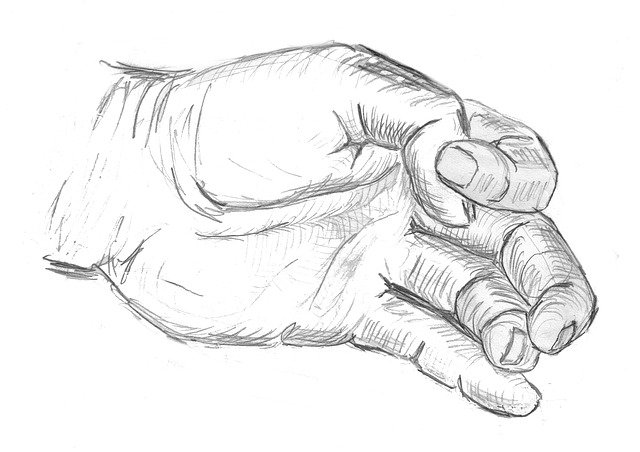Подписка на новости
Телеграмм
How to Sketch – 15 Tips For Better Sketches That Come to Life
Sketching is the art of quick, spontaneous drawing.
A practice going back hundreds - or even thousands - of years, sketching is used by artists, designers, inventors, architects and engineers to capture something quickly on paper.
19.10.2017, 09:44 | Автор: Jesse Miller
Drawing in a sketchbook...teaches first to look, and then to observe and finally perhaps to discover… and it is then that inspiration might come. - Le Corbusier

Whatever your reason for sketching, there’s always room to improve. Luckily, ‘sketchbookers’ throughout history have built up a treasure-trove of experience in techniques and tricks.
We’ve gone to look for the best advice on sketching from history’s best sketchers themselves.
1. Make the sketchbook your friendn
All drawing takes practice. But since sketching is so much about capturing things on the spur of the moment, sketching only when you’ve already planned to is not enough to truly practice. To practise sketching, one must practise sketching spontaneously, and for this one must always have a sketchbook close to hand.
Countless great artists have carried a sketchbook with them wherever they went. Pablo Picasso used his sketchbook to continually practice his technique. His notebooks are full of draft drawings for some of his great works, as well as copies of paintings he liked or simply sketches of the view from his studio.
Filmmaker Guillermo del Toro uses his notebook to detail ideas for his films, his writing interspersed with illustrations of weird and wonderful fantasy characters, captured whenever the idea for them came into his mind. Other artists also use their sketchbooks for noting down fleeting ideas for their later use; British ceramic artist Grayson Perry describes his notebook as “an archive of daft notions that later become art”.
The sketchbooks of the most famous sketcher of all, Leonardo da Vinci, are full of everything from anatomical drawings to cartoons to diagrams for inventions of machinery.
One thing is common to all these sketchbooks. Compared with the artist’s finished work, which might appear highly detailed and polished in a gallery or on a cinema screen, drawings in sketchbooks are rough, ready and spontaneous. And thanks to their creators’ habits of carrying their sketchbook constantly in their pocket, these drawings were able to be created at a moment’s notice.
Sketchbook of William Trost Richards, in public domain
Pick up a sketchbook in your local art shop, and let it become your new best friend. Whenever you see something of interest, take the time to scribble down a quick sketch. It doesn’t need to be perfect, and you don't need to be at a drafting table whenever you sketch.
Get into the habit and soon enough you’ll start to see the world through the eyes of a sketchbooker. Artist John Ruskin wrote that people who routinely sketch the world around them start to see it differently:
‘’Let two persons go out for a walk; the one a good sketcher, the other having no taste of the kind. Let them go down a green lane...The one will see a lane and trees...But what will the sketcher see? His eye is accustomed to search into the cause of beauty, and penetrate the minutest parts of loveliness.” - John Ruskin
The bottom line:
Get a pocket sketchbook and carry it with you wherever you go. Sketching spontaneously, when you get a great idea or see an interesting scene.
2. Learn proper holding technique
The first secret to good sketching might seem an obvious one - it’s all to do with how you hold your pencil.
Incorrect holding technique is a common error with beginners. The way most people learn to work with a pen or pencil is through writing. This means that we learn positions and muscle movements from writing and use them when we sketch, even though this may not be the best method for drawing.
The most important thing to learn is that different ways of holding the pencil can be used for different purposes.
Australian artist Helen South identifies four different ways to hold a pencil for sketching;
1) The ‘basic tripod; grip, which is similar to writing, with the hand resting on the paper and is used for intricate details
2) The ‘extended’ tripod grip, in which the hand is raised off the paper, and allows big, free lines to be created with very small movements
3) The ‘overhand grip’, which allows the pencil to be used at an angle for shading,
4) the ‘underhand grip’ which gives a loose, free movement of the hand.
Designer and illustrator Paul Tysall recommends using the ‘overhand’ grip to create dynamic lines of varying widths by twisting the wrist slightly as you draw, exposing different parts of the pen to the paper.
For more technical, precise drawing like architectural sketching, the key is getting your lines as straight and as accurate as possible. Architect Bob Borsonrecommends a curious trick for beginner skechers - try not to move your wrist, or even your elbow, but sketch with your entire arm, moving it from the shoulder.
This removes the ‘’wobble’’ created by small movements of the wrist and elbow.
The bottom line:
Learn different techniques of holding your tool and learn what types of sketching they are good for. Practice your precision by drawing from the shoulder, not the wrist.
3. Don’t be afraid of the eraser
Many novice sketchers envy those who can create an image effortlessly without making a correction, and see their own drawings full of eraser marks as a sign of failure.
But as English painter Stephen Farthing RA explains, even the experts need to erase. In his Oxford video lecture series he points out a drawing of a leaf by John Ruskin, perhaps the most talented sketcher of nature in history. If you look closely at the drawing, you can see that Ruskin has continually erased and redrawn the lines, making dozens of tiny corrections.
“This is the essence of modern drawing,” Farthing explains “Making marks, correcting them, and remaking marks.”
Keeping an eraser continually to hand and learning how and when to use it will give you practice in this process. It will also make you a more confident sketcher. Rather than carefully trying to get the ‘perfect’ line, you can take risks and draw without over-thinking, knowing you can erase it if necessary.
This will lead to sketches with a more lively, less rigid quality, and a more direct, natural connection with the thing being sketched.
The eraser can even be used for artistic effect in itself. Some sketches can be made beautifully by first covering a page in graphite or charcoal, then using the eraser like a pen and taking away highlights, as demonstrated by Disney animator Aaron Blaise in his drawings of creatures.
The bottom line:
All great artists use erasers. Incorporate one into your drawing material and don’t be afraid to use it!
Еще больше материалов по скетчингу здесь: http://www.urbansketchers.org/
Еще по теме:
Художники
Практикум
Оставить комментарий
Телеграмм
вакансии
- Руководитель направления по работе с архитекторами, дизайнерами, корпоративными ...
- Агентство стратегического развития «ЦЕНТР» ищет ведущего аналитика!
- Усиливаем команду VAMarchitect, ищем ГИПа!
- Конкурс на дизайн-проект офиса ИТ-компании "БАРС Груп"
- ЭКСПЕРТ Бетон - поставки бетона
- Сайт готовых проектов зданий
- Столярная мастерская по изготовлению мебели и предметов интерьера.
- Ищем прораба отделочных и общестроительных работ!
Спецпроекты
- Biofa: новое деревянное
- Галерея Tapis Rouge: проект «Туфли»
- «Создай свое завтра со стеклом AGC»
- REHAU: открытость на всех уровнях
- Мои каникулы
Конкурсы
- Международный открытый конкурс на объект Масленицы-2020 в Никола-Ленивце
- МОСКВА ВЫБИРАЕТ ЛИДЕРОВ УСТОЙЧИВОГО РАЗВИТИЯ В СФЕРЕ ЭКОЛОГИИ
- Стартует IV сезон конкурса «АРХпроект»
- Уважаемые архитекторы! Предлагаем Вам принять участие в конкурсе на разработку концептуального проекта благоустройства территории двора и малых архитектурных форм!
- С 8 июля по 16 августа 2019 года Арт-галерея ROSE` проводит конкурс современного искусства GO! NEW YORK!
- Сбербанк совместно с СБ Девелопмент объявляют о проведении закрытого международного конкурса!
- Дербент: конкурс года и точка изменений
- Rockfon приглашает принять участие в ежегодном архитектурном конкурсе и побороться за главный приз!
- Удмуртское региональное отделение Союза архитекторов России объявляет открытый архитектурный конкурс эскизных проектов капитального ремонта фасадов жилых домов серии 1-335 в Индустриальном районе города Ижевска
- Мастер-план Дербента: приглашаем к участию в конкурсе, который определит будущее одного из старейших городов России!



